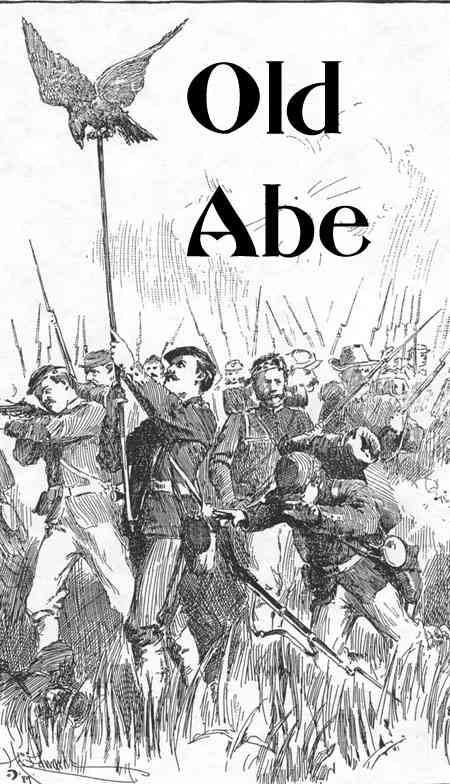 The Eighth Regiment was organized at Camp Randall, Madison, and its muster into the United States service completed on the 13th of September, 1861, and on the 12th of October, it left the State for St. Louis.
The Eighth Regiment was organized at Camp Randall, Madison, and its muster into the United States service completed on the 13th of September, 1861, and on the 12th of October, it left the State for St. Louis.
Arriving at St. Louis on the 14th of October, the regiment was soon after sent to Pilot Knob, on the Iron Mountain Railroad. On the 20th, the regiment marched with other forces under Colonel Carlin, to Frederick town, twenty-two miles, where a rebel force under Jeff Thompson, was encountered and totally routed, and pursued to Greenville. The Eighth was stationed in the town to guard the baggage, and was not actively engaged. Returning to Pilot Knob after the pursuit, they engaged in railroad guard duty, taking part in an expedition to the St. Francis River in November. On the 25th, they moved to Sulpher Springs, where they were engaged in railroad guard duty until the 25th of January, 1862, when the regiment proceeded to Cairo, and was employed in guard and garrison duty until the 4th of March, when it moved along the line of the Cairo and Fulton Railroad, and joined the forces of General Pope, near New Madrid, being assigned to duty at Point Pleasant, nine miles below, in the Fifth Division, under the command of General Plummer. Here they were on duty in rifle pits on the river bank, to prevent the landing of the rebel gunboats. On the 7th of April, with General Plummer’s command, the regiment marched to New Madrid, and crossed the river to the Kentucky shore, to assist in the pursuit of the flying rebels after the evacuation of Island No. 10, returning to New Madrid on the 9th.
General Pope’s command embarked on steamers to go down the river to Memphis, but on reaching the vicinity of Fort Pillow, the orders were countermanded, and the transports turned about and steamed up the river to Cairo, thence they proceeded up the Tennessee River and joined General Halleck’s forces in front of Corinth, camping at Hamburg on the 22d of April, and moving on the lst of May, to near Farmington. Here the regiment was placed in the Second Brigade, General Plummer, Second Division, General Stanley, in General Pope’s “Army of the Mississippi.” A reconnaissance in the direction of Corinth was made on the 8th, by the divisions of Generals Paine and Stanley. On the 9th, Major Jefferson, with a detachment, was on duty at the outpost, a mile and a half in advance of the lines, when he was attacked, and after holding the enemy’s skirmishers in check for some time, was obliged to fall back to the brigade. The object of the reconnaissance being effected, the forces returned, leaving the brigade of General Plummer to bring up the rear. The rebels opened with artillery with considerable effect. The brigade was ordered to the top of the hill, where the rebels were found within range, and a brisk fire being opened upon them, the enemy fell back. The brigade then retired to a piece of timber,where they were again annoyed by the enemy’s artillery.
The ground was held here by the Eighth Regiment until the rest of the brigade retired, and the rebels began turning their right flank, when the Eighth also fell back in good order, bringing up the rear of our retreating forces. For the gallantry thus displayed, the regiment received the commendation of their superior officers in general orders.
The casualties in the battle of Farmington, were 5 killed or died of wounds and 14 wounded.
The regiment was under command of Lieutenant Colonel Robbins, and Major Jefferson, both of whom, with all the officers and men, displayed the greatest coolness and bravery in this their first battle with the rebels. The loss of Captain Perkins and Lieutenant Beamish, was greatly lamented.
They remained at Farmington until the 28th, when they marched to the front, about three-fourths of a mile from the enemy’s works at Corinth, and with the brigade, lay down in a ravine which run nearly parallel with the enemy’s works. Here they lay until 3, P. M., while the artillery from both sides played over their heads. At that hour a rebel infantry force advanced to turn their right, and capture our batteries. The battery in front of the Eighth withdrew except one gun. Seeing this, the enemy rushed for it, but just as they were about to lay hands on it, the Eighth moved to the brow of the hill and poured such tremendous volleys into their ranks, as to check their advance, and after some very sharp fighting, the rebels were forced to retire to the woods in disorder. By their promptness and energy, the Eighth saved the right flank from being turned, and the brigade from being routed. This was the last stand made by the rebels before Corinth, they evacuating their works on the night of the 29th.
The casualties in the skirmish before Corinth were 2 killed, 5 wounded.
The brigade joined in the pursuit of the enemy as far as Boonville, capturing a large quantity of stores. On the 12th of June, they marched to “Camp Clear Creek,” nine miles south of Danville, where they remained in summer quarters until the 18th of August, engaged in guard and fatigue duty, and in acquiring thorough brigade and battalion drill. Colonel Murphy was in command of the brigade. On that day they moved to Tuscumbia, Ala., arriving on the 22d. Here Colonel Murphy was put in command of the post, Major Jefferson was appointed Provost Marshall, and the Eighth employed as Provost Guard.
Colonel Murphy left Tuscumbia, with his brigade, on the 8th of September, and proceeded towards Iuka, reaching that place on the 12th, and found it deserted by the Union forces. Three of his regiments, and his artillery were ordered forward to Burnsville, leaving him the Eighth, and about 400 Minnesota men and 2 or 300 Illinois cavalry. This force was attacked next day, by the advance of General Price’s army. Finding himself outnumbered, Colonel Murphy withdrew with his command, and marched to Farmington. Reaching that place, a larger force was sent forward towards Iuka under Colonel Mower, and the Eighth returned with them. Colonel Mower went within two miles of the town, and found it occupied by General Price in force, he therefore returned to Burnsville. For abandoning Iuka, Colonel Murphy was placed under arrest.
The divisions of Generals Hamilton and Stanley, moved from Clear Creek to Jacinto, for the purpose of making an attack on Price at Iuka, from the southeast. At Jacinto, the Eighth Regiment joined the brigade in Stanley’s division, and marched with it, and was present at the battle of Iuka, on the 19th, but being placed on the left, and in the reserve, were not actively engaged, though they had five men wounded. The brigade joined in the pursuit the enemy as far as Aberdeen, when they returned to Corinth, through Jacinto to Rienzi and Kossuth, and arrived at Corinth on the afternoon of the 3d of October, while the battle at that place was at its height. The rebels bad succeeded in driving back our troops from the enter breastworks, and a new line was formed about a mile and a half from Corinth. The Second Brigade of Stanley’s division went to the support of General Davies. The rebels advanced from the old breastworks and attacked the whole line, massing their troops against Davies, and after a fierce and bloody contest, compelling him to retire. Stanley’s Second Brigade, consisting of the Eighth Wisconsin, Eleventh Missouri, Twenty-sixth and Forty-seventh Illinois regiments now moved to the front, taking the position abandoned by our retreating troops, and for a time, checked the enemy’s advance. For more than an hour the brigade held the enemy at bay and under a most terrific fire, fought with the utmost gallantry. They subsequently fell back to within about a quarter of a mile from the edge of the town, with the rest of our forces, where they formed in positions to support the batteries of siege guns and field pieces, planted behind the earthworks which had been constructed by the Union troops. On the next day the Eighth occupied a position in the centre, where it suffered no loss.
The casualties in the battle of Corinth were 21 killed or died of wounds and 60 wounded.
The enemy were pursued forty miles, when the regiment returned to Corinth and engaged in guard duty and building fortifications. On the 2d of November, they moved to Grand Junetion, and took part in the southward movement of General Grant’s forces in his first attempt to reach the rear of Vicksburg, in December, 1862, to cooperate with Sherman’s movement down the Mississippi, being employed at Davis’ Mills, Lumpkin’s Mills, at Waterford, Abbeville, Oxford, Tallahatchie, Holly Springs, and LaGrange, in performing guard duty, building bridges, provost guard duty, and kindred service.
The surrender of Holly Springs, on the 20th of December, with its immense stores for Grant’s army, defeated that enterprise. For this surrender Colonel Murphy, who was in command of the post of Holly Springs, was dismissed the service in February, and Lieutenant Colonel Robbins was appointed Colonel, Major Jefferson Lieutenant Colonel, and Captain Britton Major, of the Eighth.
The regiment moved in January, from LaGrange by way of Corinth to Germantown, Tenn., where they were employed in building fortifications, and guard duty, until March llth, when they marched to Memphis, and joined the forces intended by General Grant to operate against Vicksburg, which were being concentrated near Helena. On the 29th, they proceeded down the river to Young’s Point, near Vicksburg, where they engaged in fatigue duty, digging canal and building roads. The regiment was in Mower’s brigade of Tuttle’s division, of Sherman’s Fifteenth Army Corps. With the Fifteenth Corps the brigade left Young’s Point, on the 2d of May, marched to Hard Times Landing, crossed to Grand Gulf, and proceeded towards Raymond, Miss., driving the enemy before them into Jackson, where in conjunction with General McPherson’s Seventeenth Corps, they assaulted the enemy’s works carried them, and took possession of the Capital of Mississippi on the 14th. Lieutenant Colonel Jefferson was made Provost Marshal, and the Eighth acted as Provost guard, and was detailed to destroy Confederate stores.
They left Jackson on the 16th, and moved to Walnut Hills, forming on the extreme right of the investing force around Vicksburg. Here on the 22d, they took part in the celebrated assault on the enemy’s works. General Mower’s brigade moved up a ravine, marching by the flank in four ranks. The ravine was soon so filled with fallen men that the brigade could not get through. Four companies of the Eighth turned to the right under cover of a hill, and got close under the enemy’s works. The fight was kept up till dark, when the brigade withdrew to their former position, and was highly complimented for their gallantry.
The casualties reported were 4 killed or died of wounds and 15 wounded.
On the 25th, the brigade joined an expedition against General Johnston at Mechanicsburg, and after capturing a large number of cattle and mules, and destroying a large quantity of corn and cotton, they returned to Haines Bluff, and thence proceeded up the Yazoo River to Satartia, and from thence again marched to Mechanicsburg, meeting a force of cavalry and infantry, which they defeated and drove through that place.
The Eighth was the only regiment engaged, and lost two men wounded.
Returning to Haines’ Bluff, they subsequently moved to Young’s Point, and camped, and on the 14th of June, marched to Richmond, La., where they routed the enemy and took possession of the town, capturing thirty prisoners and having six men wounded, returning to their former position at Young’s Point on the 16th of June. They remained here on duty opposite the city while the seige of Vicksburg was progressing, until the 12th of July, engaged in severe and dangerous duty, acting, as sharpshooters, and being exposed to the fire of the enemy’s great guns in the city. They were expected to prevent the escape of the enemy across the river. Occasionally they would receive a shelling, from the rebels, but they were not to be driven from their post. The position was very unhealthy, and the regiment suffered greatly from sickness. On the 12th of July, they moved to Vicksburg, and subsequently went into Camp Sherman, on Bear Creek, remaining there till the 26th of September, engaged in guard and fatigue duty. On that day, the brigade moved to Black River Bridge, and went into camp, and remained until the 13th of October.
Colonel Robbins resigned on the 1st of September, and the regiment remained under the command of Lieutenant Colonel Jefferson.
On the 13th of October, the brigade joined in a reconnaissance in force, under General McPherson, towards Canton, Miss.returning to camp at Black River Bridge on the 19th, where they remained until the 7th of November, when they proceeded to Vicksburg, thence to Memphis, and from there to La Grange, Tenn., and camped. At this point and Saulsbury, nine miles distant, the regiment was stationed until January, engaged in the performance of guard duty and skirmishing with the enemy, together with expeditions towards Pocahontas, against the forces of the rebel Forrest.
On the 27th of January, 1864, they proceeded to Vicksburg by the way of Memphis, and encamped near Black River Bridge on the 3d of February. They participated in Sherman’s famous Meridian Expedition, marching as far as Canton, Miss., and returning to Black River Bridge, thence to Vicksburg, on the 5th of March.
The number of veteran reenlistments were sufficient to make the Eighth a veteran organization, and the men expected to be sent from Vicksburg on veteran furlough, but in compliance with the especial request of General Sherman, the regiment consented to remain and take part in General A. J. Smith’s projected expedition up the Red River, to cooperate with General Banks.
The regiment was in the Second Brigade, First Division, under General Mower. Leaving Vicksburg March 10th, they passed down the Mississippi and up the Red River to Simmsport, and landed. The brigade advanced and charged upon the rebels at Fort de Russy, four miles from Simmsport, capturing several prisoners and some military stores. Continuing up Red River, the expedition attacked and captured Fort de Russy, after a short resistance. Here they were joined by the fleet, when they proceeded to Alexandria. Awaiting the arrival of General Banks army the Eighth, with four other regiments, under General Mower, procceded twenty-five miles to Henderson Hill, where they found the rebels posted with artillery. A detour of fifteen miles was made in order to attack the enemy in the rear. Reaching the position about midnight, General Mower succeeded in capturing the whole rebel force, 350 strong, with 4 guns and 400 horses and other munitions of war. This was done in the vicinity of the rebel General Taylor’s force of 12,000 men. Returning to Alexandria, Smith’s army marched up Red River to Point Cotile, where they waited for Banks’ army, and on the 3d of April, embarked on the transports, and proceeded up to Grand Ecore, 80 miles above, expecting to find the enemy there in strong force. The rebels, however, retired without much show of resistance. On the 8th, Smith’s army reached Pleasant Hill. On that day, General Banks’ army had engaged the enemy at Mansfield, or Sabine Cross Roads, 16 miles in advance of General Smith, and been driven back in disorder to Pleasant Hill. The next day, General Smith’s army, with a part of Banks’ force, received the attack of the enemy, and after four hours hard fighting, drove him from the field. The Eighth was stationed to prevent a flank movement, but was double quicked to the front, and joined in the pursuit. After the battle, a retreat was made by order of General Banks to Grand Ecore, and thence to Alexandria. At Natchitoches, the Eighth held a bridge against the enemy and assisted in repelling an attack on the rear. At Clouterville, the Eighth was attacked by the enemy with artillery and musketry, and after a stubborn contest, against superior numbers, the rebels were driven back in confusion.
Here Captain Josiah B. Redfield, of Company A, Isaac N. Groves, of Company F, Thomas Bowels and Conrad Pahn, of Company G, were wounded.
The retreat continued day and night, and Alexandria was reached on the 26th, the troops being much exhausted from marching and short rations.
General Smith’s army was sent up Bayou Rapids to keep the enemy in check, while Colonel Bailey was engaged in the work of getting Porter’s fleet over the rapids at Alexandria, by means of the dam. On the 4th of May, the Eighth was deployed as skirmishers, covering the army front, and drove the enemy three mi1es. Here, James C. Edgar, of Company I, was wounded severely. As the army, approached Bayou La Moore, the enemy annoyed them by an almost continuous artillery and musketry fire. On the 13th, the retreat was resumed, and the Eighth was sent to hold a bridge in the rear, over which Smith’s army was to pass. They moved next day with the rest of the army, skirmishing with the enemy, and reached Fort de Russey on the evening of the 15th. At Marksville, the advance engaged with the enemy in front. Smith’s army deployed to the right, and moved to Mansurara, where the enemy was found in position. The brigade advanced across an open prairie, receiving the artillery fire of the enemy, but continued until within range of his musketry, when a charge was made upon his guns. Hurriedly limbering up, the enemy succeeded in carrying off his artillery, leaving his dead and wounded on the field.
The Eighth had eight men severely wounded and twenty-five slightly wounded.
On the 17th, at Calhan’s plantation and Bayou de Glaize, the regiment was engaged in repulsing the enemy. Here, Captain Charles P. King, of Company G, was severely wounded. On the 18th, General Banks’ army being nearly across the Atcahfaylaya, General Smith put a part of his force in motion to the rear, and attacked the enemy, who was in pursuit, and after a short and terrible conflict, repulsed and drove them three miles. The Eighth was in the advance, and covered the movement.
In this fight, Lieutenant James T. McClure, of Company F, was mortally wounded, dying next day, and Avery Robinson, of Company D, was wounded, and subsequently died.
The next day, Smith’s army crossed, and proceeded to the mouth of Red River, embarked, and reached Vicksburg on the 24th, and went into camp.
The rebels having attempted to blockade the Mississippi at Columbia, Ark., on the 6th of June, General Smith sent forward General Mower’s division of 1500 infantry and a battery. The enemy were found strongly posted between two bayous, which covered his flanks, while he had a good supply of artillery posted in the narrow passage between the two bayous. After a severe contest, the enemy were driven from their position, and pursued several miles. This is known as the battle of Lake Chicot.
In this affair, the regiment suffered three killed and 16 wounded.
Marching to Columbia, Ark., the command proceeded up the river to Memphis, and went into camp. Here the veterans were allowed to proceed to Wisconsin on thirty days furlough, leaving the non-veterans under command of Captain Williams. These were moved to La Grange, employed as railroad guard, and in July, took part in General A. J. Smith’s expedition into Mississippi, and participated in the engagements near Tupelo, in which Ole Severson, of Company H, was killed. They returned to Memphis after a march of two hundred and sixty miles. Here, they were rejoined by the regiment from veteran furlough.
The Eighth marched from Memphis on the 2d of August with the forces of General A. J. Smith into Mississippi, returning on the 29th. In this expedition, W. J. Baker, of Company A, and U. A. Tewksbury, of Company C, were killed. On the 2d of September, they proceeded by the way of White River to Duval’s Bluff, thence to Brownsville, and on the 17th, marched with the forces under General Mower in pursuit of the rebel General Price, who was making a raid into Missouri. After marching three hundred and fifty miles, they reached Cape Girardeau, below St. Louis, arriving there about the lst of October.
Leaving Cape Girardeau on the 5th of October, the forces of General Mower proceeded up the Mississippi to St. Louis, where the regiment was newly clothed and equipped. Reembarking on transports, they reached Jefferson City, on the Missouri River, on the 15th, whence they moved by rail to Lamoine Bridge. Here they were assigned a position in the expeditionary army against General Price, who was making his way into southwestern Missouri, through Kansas. The expedition reached Little Santa Fe, Kansas, when information being received of the defeat and dispersion of Price’s forces, and that General’s escape into Arkansas, orders were given for a return, which was accomplished by marching and transportation by rail and steamer, so that they reached Benton Barracks on the 15th of November. Resting a few days, and refitting for another expedition, on the 23d of November, they left Benton Barracks, and proceeded, with the forces of General A. J. Smith, up the Ohio and Cumberland Rivers, to reinforce General Thomas, at Nashville, which place was threatened by the rebel General Hood. Landing at Nashville on the 30th, they proceeded and took position in the defensive works south of the city, and on the 15th and 16th of December, took part in the battle of Nashville. Here the Eighth,under Lieutenant Colonel Britton, made four distinct charges on the enemy’s works – in the final one, driving the enemy in a perfect rout, from their last line of defences. In this charge the regiment captured a six gun battery, about 400 prisoners, and two stands of colors. Companies B and D, acting as flankers, surrounded and captured 200 prisoners.
The Eighth lost 10 killed and 52 wounded.
After the defeat of the rebels, the regiment joined in the pursuit, marching 150 miles, and finally encamping at Clifton, Tennessee, on the 2d of January, and moved thence to Eastport, on the Tennessee River. Embarking on the 6th of February, the regiment proceeded with Smith’s Sixteenth Corps down the Tennessee to Cairo, thence down the Mississippi to New Orleans, and went into camp five miles below the city.
The Sixteenth corps of General Smith, moved in transports on the 5th of March, to take part in the investment of the defenses OF Mobile, landing at Dauphin Island, from whence they moved, on the 20th, across Mobile Bay, and proceeded up Fish River ten miles, and went into camp. On the 25th they moved and took position in the lines before Spanish Fort. Here they were constantly employed in fortifying, and the performance of picket duty, until the evacuation of the Fort, on the 9th of April, when they moved to a position before Fort Blakely, and took part in the charge on that place, with a small loss of 3 killed and died of wounds.
After the surrender, the regiment marched 180 miles, to Montgomery, Alabama, where they remained until the 10th of May. On that day they marched by the way of Selma, and took cars for Uniontown, on the Alabama and Mississippi River Railroad. Here they went into camp, and remained until orders were received for their muster out. This was done at Demopolis, Alabama, on the 5th of September, and the regiment reached Madison on the 13th, where they received their pay, and were formally disbanded.
The Eighth was known as the “Eagle Regiment,” from the fact that a live Eagle was carried through all its campaigns, up to the return of the non-veterans, in 1864. This noble bird was taken from the parent nest in Chippewa County, in this State, by an Indian, who disposed of it to a gentleman of Eau Claire County, from whom it was purchased by the members of Captain Perkins’ company – Eau Claire Eagles – by whom it was presented to the regiment while organizing, in 1861. It is needless to say that it was instantly adopted as the regimental pet,and was christened,’Old Abe!” A perch was prepared, and the royal bird was borne with the regiment on all its marches, and into every battle in which the gallant Eighth was engaged, up to the muster out of the non veterans. Perched on his standard above the heads of the men, the bird has been more than once the mark for rebel bullets, but luckily has escaped unharmed,with the exception of the loss of a few feathers, shot away. He returned with the non veterans in 1864, and was presented to the State, and placed in charge of the Quartermaster’s department, and every care necessary is bestowed upon him. At the great Chicago Fair, in 1865, “Old Abe” was exhibited and his photograph disposed of, realizing the amount of about $16,000. He was also exhibited at the Milwaukee Fair, with profitable results. We are told that the sum netted to these charitable objects was about $20,000. He occasionally breaks from his fetters, and soars into his native element, but he has become so far domesticated that he is easily recovered. Occasionally the music of a band, or the noise of a drum will reach his ear, when he will instantly listen, and will respond with his characteristic scream, probably recognizing the strain as one with which the battle field has made his ear familiar. Old Abe has become celebrated in our military annals, and his history is inextricably interwoven with that of the brave and gallant regiment who bore him triumphantly through the field of strife.
Regimental Statistics – Original strength, 973. Gain – by recruits in 1863, 52, in 1864, 236, in 1865, 62; by substitutes, 16; by draft in 1865, 3; by veteran reenlistments, 301; total, 1,643.
Loss – by death, 255; missing, 3; desertion, 60; transferred, 41; discharged, 320; mustered out, 964.
Quiner, Military History of Wisconsin, 1866
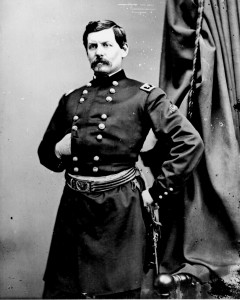 I guess I am implying that some see him as not a “Disaster” and I think that to be the case, he has defenders does he not?
I guess I am implying that some see him as not a “Disaster” and I think that to be the case, he has defenders does he not?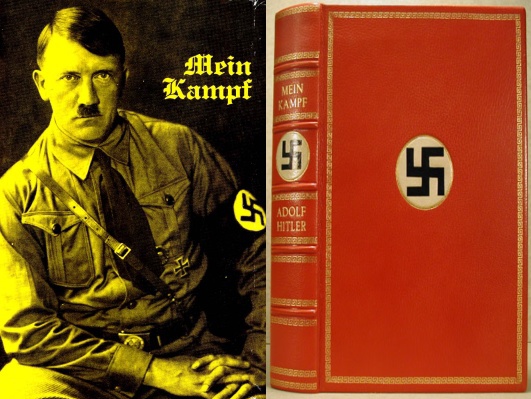 Oliver Stone is no stranger to conspiracy theories and to gross historical inaccuracies (see JFK for starters, Oswald was the lone shooter), and it looks like he is taking on yet more “misunderstood” events and people (thank God for Oilver Stone or we would all be , as he says “ignorant.”); only this time his focus is frankly mind-boggling. (Oh how I wish he’d stick to movies like Platoon, that was a great flick!)
Oliver Stone is no stranger to conspiracy theories and to gross historical inaccuracies (see JFK for starters, Oswald was the lone shooter), and it looks like he is taking on yet more “misunderstood” events and people (thank God for Oilver Stone or we would all be , as he says “ignorant.”); only this time his focus is frankly mind-boggling. (Oh how I wish he’d stick to movies like Platoon, that was a great flick!) “I’ve been able to walk in Stalin’s shoes and Hitler’s shoes to understand their point of view,” says Stone. Good, glad to hear it. Only you would want to walk in their shoes.
“I’ve been able to walk in Stalin’s shoes and Hitler’s shoes to understand their point of view,” says Stone. Good, glad to hear it. Only you would want to walk in their shoes.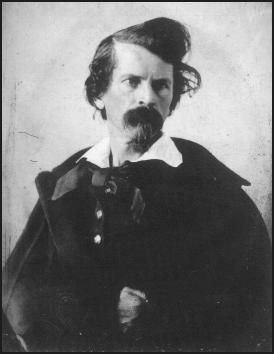 A Vicksburg newspaper reporter once referred to Van Dorn as “the terror of ugly husbands.” (Van Dorn pictured left)
A Vicksburg newspaper reporter once referred to Van Dorn as “the terror of ugly husbands.” (Van Dorn pictured left) Elvis would have been 75 today, happy birthday to the King of Rock and Roll! My mother was a huge Elvis fan and I have to admit I own a couple of his songs on my iPod. Anyway, to another shining example of American Exceptionalism (and tragedy), Elvis Presley. That he borrowed indiscriminately – at times – from others is true, yet he did it so well. He is the legend. Here he is singing one of my favorite songs:
Elvis would have been 75 today, happy birthday to the King of Rock and Roll! My mother was a huge Elvis fan and I have to admit I own a couple of his songs on my iPod. Anyway, to another shining example of American Exceptionalism (and tragedy), Elvis Presley. That he borrowed indiscriminately – at times – from others is true, yet he did it so well. He is the legend. Here he is singing one of my favorite songs: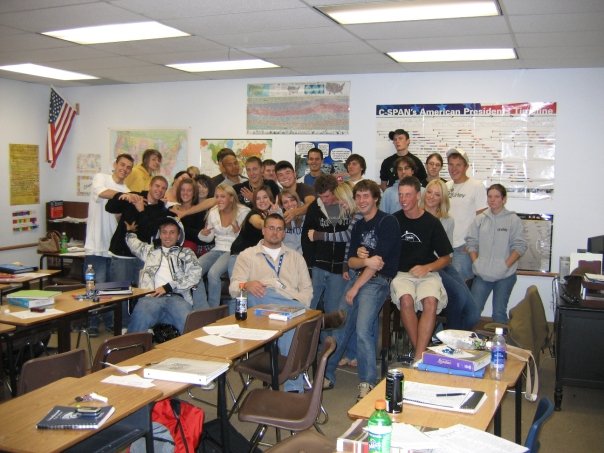 This week was the beginning of our second semester here in Colorado, and in my A.P. United States history class we changed from a block (95 min) class last semester to a skinny (45 min) class. We are up to the Progressive Movement and have found our numbers shrink from 26 to 12, due to the workload and couple of minor accidents… just kidding.
This week was the beginning of our second semester here in Colorado, and in my A.P. United States history class we changed from a block (95 min) class last semester to a skinny (45 min) class. We are up to the Progressive Movement and have found our numbers shrink from 26 to 12, due to the workload and couple of minor accidents… just kidding.  I was called out in an email by a reader (this is not an attack as I respect this reader and hence why I am not revealing their identity) who asked me about my belief in American Exceptionalism and my
I was called out in an email by a reader (this is not an attack as I respect this reader and hence why I am not revealing their identity) who asked me about my belief in American Exceptionalism and my 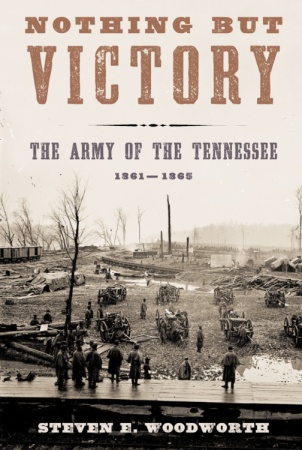 But most importantly it is the quality of the instructor, Dr. Steven E. Woodworth, who is as prolific of a Civil War historian as I know.
But most importantly it is the quality of the instructor, Dr. Steven E. Woodworth, who is as prolific of a Civil War historian as I know.
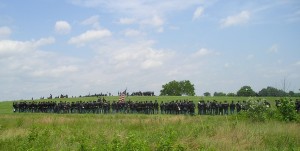
 The Eighth Regiment was organized at Camp Randall, Madison, and its muster into the United States service completed on the 13th of September, 1861, and on the 12th of October, it left the State for St. Louis.
The Eighth Regiment was organized at Camp Randall, Madison, and its muster into the United States service completed on the 13th of September, 1861, and on the 12th of October, it left the State for St. Louis.